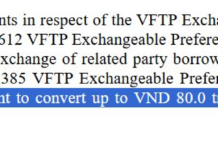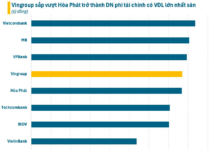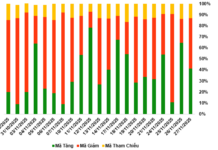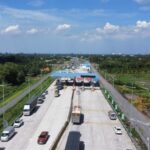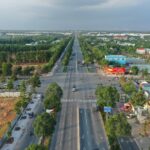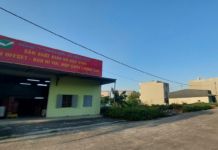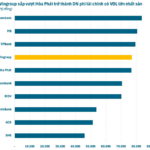Vietnam’s Ministry of Construction has recently approved the investment plan for the expansion of the Ho Chi Minh City – Trung Luong – My Thuan Expressway under a Public-Private Partnership (PPP) scheme, utilizing a BOT (Build-Operate-Transfer) contract. Project Management Unit 7 has been designated as the inviting party, tasked with conducting the investor selection process.
Spanning 96.13 kilometers, the expressway traverses Ho Chi Minh City, Tay Ninh, and Dong Thap provinces. It originates at the Cho Dem interchange in Ho Chi Minh City and terminates north of the My Thuan 2 Bridge in Dong Thap province.
Full Route Expansion and Upgrading of 8 Interchanges
According to the approved plan, the Ho Chi Minh City – Trung Luong segment will be widened from 4 to 8 lanes, with a roadbed width of 41 meters and a design speed of 120 km/h. The Trung Luong – My Thuan segment will be expanded from 4 to 6 lanes, featuring a 32.25-meter-wide roadbed and a design speed of 100 km/h.
Long-term plans include expanding the Cho Dem – Ring Road 4 section to 12 lanes and the Ring Road 4 – Trung Luong section to 10 lanes. The route will feature two rest stops at Km28+200 (Ho Chi Minh City – Trung Luong segment) and Km78+220 (Trung Luong – My Thuan segment).
 |
All eight existing interchanges will be upgraded to accommodate additional lanes. The Ho Chi Minh City Ring Road 3, Ben Luc, and Tan An interchanges will be expanded to support 8 expressway lanes and 2 emergency stop lanes. The Cai Lay, Cai Be, and An Thai Trung interchanges will be widened to accommodate 6 expressway lanes and 2 emergency stop lanes.
Two new interchanges will be added for better connectivity. The An Huu – Cao Lanh Expressway interchange will be a Trumpet-type interchange, currently under construction as part of the Cao Lanh – An Huu Expressway project. The DT.818 interchange will include new exit and entry ramps connecting to the expressway.
Existing utility tunnels will be retained and extended to match the widened roadbed, constructed with concrete and reinforced concrete.
The project involves the construction and expansion of 66 bridges, including 61 on the expressway and 5 within the interchanges.
Existing frontage roads and local access roads will be maximally utilized. Additional frontage roads will be constructed to enhance local connectivity along the expressway.
An intelligent transportation system will be implemented, featuring surveillance cameras, vehicle detection systems, dynamic message signs, digital transmission systems, radio communication, power supply, a traffic management center, electronic toll collection, and vehicle weight enforcement systems.
The traffic management center will be upgraded to meet the operational and management requirements of the expanded expressway.
 |
The toll system will employ electronic toll collection technology, integrated with other expressway networks to ensure economic efficiency, technical effectiveness, and compliance with current standards.
Over 36,000 Billion VND Investment, 17+ Years of Toll Collection
The total investment exceeds 36,172 billion VND, a reduction of over 5,200 billion VND from previous estimates. This includes 5,087 billion VND for compensation, support, and resettlement; 20,770 billion VND for construction; 711 billion VND for equipment; and the remainder for contingencies, consulting, and other expenses.
Under the PPP scheme with a BOT contract, the investor’s equity totals 5,425 billion VND (15%), with approximately 30,746 billion VND (85%) in borrowed capital. Interest during construction is estimated at 4,271 billion VND.
 |
Construction is set to begin in 2025, with completion and operation starting in 2028. The toll collection period for recouping the investment is projected at 17 years and 3 months.
The Ministry of Construction has assigned Project Management Unit 7 to oversee the bidding process, publish investor selection results, and handle procedures in accordance with PPP regulations. This unit will also draft project contracts, establish financial and commercial capability requirements, conduct negotiations, and finalize contracts as prescribed.
|
The Department of Economics and Construction Investment Management (Ministry of Construction) announced that on December 19, the Ministry will launch four major projects, including the expansion of the Ho Chi Minh City – Trung Luong – My Thuan Expressway. |
A representative from the Ministry of Construction stated that expanding the Ho Chi Minh City – Trung Luong – My Thuan Expressway will alleviate traffic congestion. Combined with other operational projects, it will establish a comprehensive transportation network in the Southern Key Economic Region, completing the Mekong Delta’s expressway system.
|
The project requires approximately 1,070 hectares of land, with 949.71 hectares already cleared and 120 hectares needing additional clearance (6.37 hectares in Ho Chi Minh City, 60.84 hectares in Tay Ninh, and 53.29 hectares in Dong Thap). Compensation, support, and resettlement costs total around 5,088 billion VND, with Ho Chi Minh City accounting for 1,303 billion VND, Tay Ninh for 2,340 billion VND, and Dong Thap for 1,444 billion VND. Compensation, support, and resettlement will be managed as a separate sub-project by the People’s Committees of Ho Chi Minh City, Tay Ninh, and Dong Thap. Classified as a special-grade transportation project, it will be executed from 2025 to 2028. |
VIET LONG
– 11:07 27/11/2025
VinSpeed Incurs Billions in Losses Yet Persists with North-South High-Speed Rail Project: Unveiling Pham Nhat Vuong’s Bold Financial Strategy
Vingroup’s Vice Chairman assures that the 30-year financial plan has been meticulously calculated, guaranteeing capital from both Phạm Nhật Vượng’s ecosystem and additional strategic funding options.












